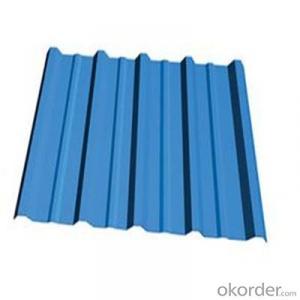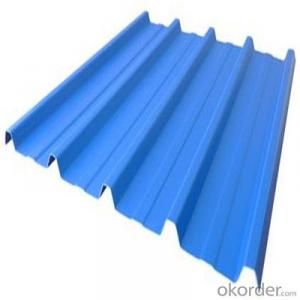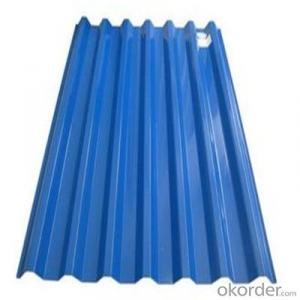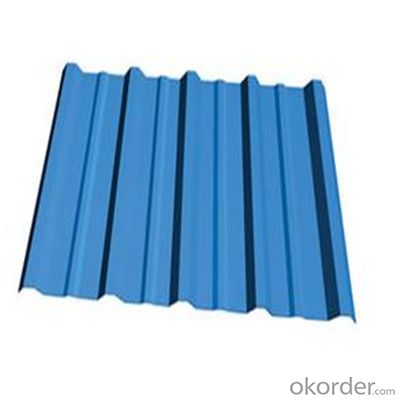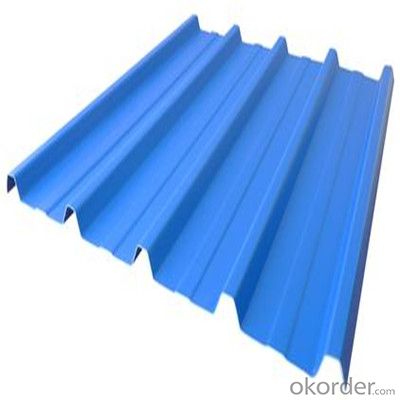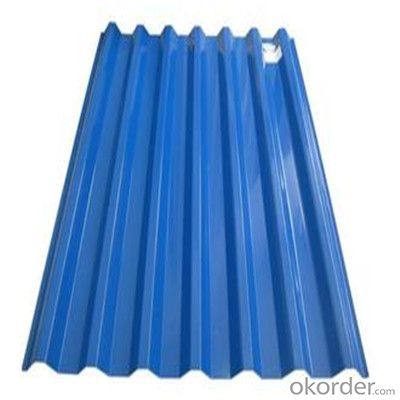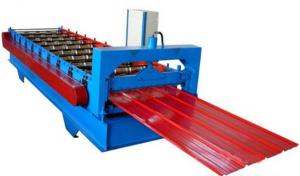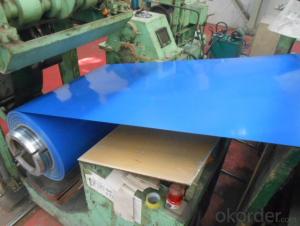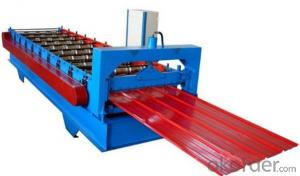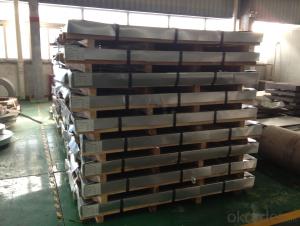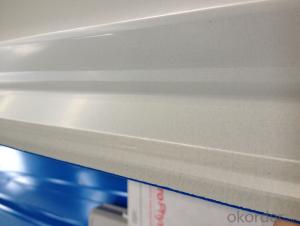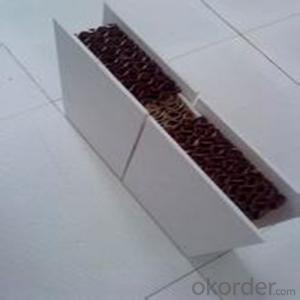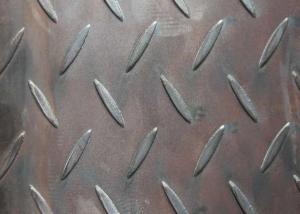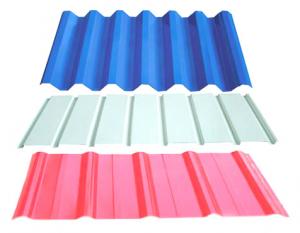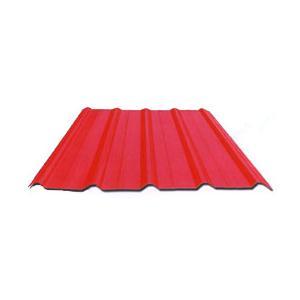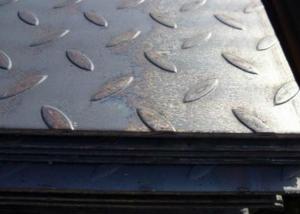Prepaint Galvanized Corrugated Iron Sheet
- Loading Port:
- Shanghai
- Payment Terms:
- TT OR LC
- Min Order Qty:
- 50 m.t.
- Supply Capability:
- 1000000 m.t./month
OKorder Service Pledge
OKorder Financial Service
You Might Also Like
Specification
Description of Prepainted Corrugated Iron Sheet:
1. Hot-dipped galvanized
2. Color: All RAL color
3. Thickness: 0.23-1.0MM
4. Developed Width: 600mm to1200mm
Specifications of Prepainted Corrugated Iron Sheet:
1. Heat insulation
2. Water proof
3. Easy install
4. Super quality
Features of Prepainted Corrugated Iron Sheet:
(1) Novel and beautiful modeling , rich luster, strong adornment sex, flexible in combination, can express different architectural styles;
(2) Light weight (6 ~ 10 kg/m squared) high strength (yield strength 250 ~ 550 mpa) fine skin stiffness,fine seismic performance of waterproofing agent;
(3) Factory product with high quality industrial buildings, public buildings, storehouse halls, residential buildings, trade buildings, sport halls, exhibition buildings and offices
Images of Prepainted Corrugated Iron Sheet:
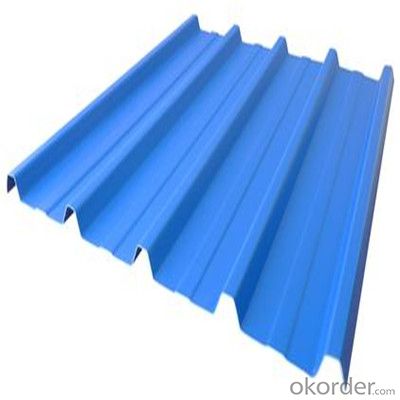
FAQ:
1. What's the Delivery port?
The main ports are Qingdao and Tianjin, we also can deliver to other ports to meet your requirements
2. How long is the lead time?
Delivery time: 45 days after order confirmed.
3. What payment term do you accept?
Payment: T/T or L/C at sight.
- Q: Can steel sheets be bent or shaped?
- Yes, steel sheets can be bent or shaped using various techniques such as cold forming, hot forming, or through the use of specialized machinery such as brakes and presses.
- Q: What is the standard size of a steel sheet?
- The specific application and industry play a significant role in determining the varying standard sizes of steel sheets. However, it is common to find steel sheets in standard sizes like 4 feet by 8 feet (1.2 meters by 2.4 meters) or 5 feet by 10 feet (1.5 meters by 3 meters). These dimensions are widely utilized in construction, manufacturing, and fabrication processes. It is worth mentioning that customized sizes can be obtained to cater to the specific needs of a project or customer.
- Q: Can steel sheets be painted or powder-coated after installation?
- Yes, steel sheets can be painted or powder-coated after installation. This allows for customization and protection against corrosion or other environmental factors.
- Q: What are the advantages of using steel sheets in automotive manufacturing?
- There are several advantages of using steel sheets in automotive manufacturing. Firstly, steel sheets offer high strength and durability, making them suitable for withstanding heavy loads and impacts. This enhances the overall safety of the vehicle and provides protection to the occupants. Secondly, steel sheets can be easily molded and shaped into various complex designs, allowing for greater design flexibility in car manufacturing. Additionally, steel sheets have excellent corrosion resistance, ensuring the longevity of the vehicle and reducing maintenance costs. Lastly, steel sheets are cost-effective compared to alternative materials, making them a preferred choice for mass production in the automotive industry.
- Q: What is the typical impact strength of a steel sheet?
- The typical impact strength of a steel sheet can vary depending on the grade and thickness of the steel. However, steel sheets generally have high impact strength due to their tough and durable nature.
- Q: What are the safety precautions for handling steel sheets?
- When handling steel sheets, it is important to follow several safety precautions. Firstly, workers should wear appropriate personal protective equipment (PPE) such as gloves, safety glasses, and steel-toed boots to protect themselves from potential injuries or hazards. Additionally, workers should be trained on proper lifting techniques to prevent strains or muscle injuries. It is crucial to use mechanical lifting equipment like cranes or forklifts when moving heavy steel sheets to avoid manual handling risks. Furthermore, the storage area should be organized and secured to prevent falling objects and injuries. Regular inspections of the sheets for defects or sharp edges are necessary to prevent cuts or punctures. Lastly, workers should be aware of the proper procedures for cutting or shaping steel sheets, using tools that are well-maintained and in good working condition. Adhering to these safety precautions will help minimize the risk of accidents and ensure a safe working environment.
- Q: Can steel sheets be used for acoustic insulation?
- Steel sheets alone cannot provide effective acoustic insulation. Steel is a highly conductive material that allows sound waves to easily pass through, resulting in poor soundproofing properties. To achieve acoustic insulation, additional materials with sound-absorbing properties, such as acoustic foam or mineral wool, should be used in combination with the steel sheets.
- Q: What is the minimum order quantity for the steel sheets?
- You must order at least 100 units of steel sheets.
- Q: Are steel sheets resistant to UV rays?
- Steel sheets do not possess inherent resistance to UV rays, contrary to belief. UV damage can indeed affect steel, leading to fading, discoloration, or even corrosion with the passage of time. However, the degree of harm incurred is contingent upon several factors, including the steel type, sheet thickness, UV exposure specifics, and presence of protective coatings. In order to bolster the UV resistance of steel sheets, manufacturers commonly administer coatings like paint, powder coatings, or galvanized finishes, which offer some level of defense against UV rays. It is vital to consult steel suppliers or manufacturers to ascertain the precise UV resistance capabilities of the steel sheets in use and consider supplementary protective measures if deemed necessary.
- Q: How do steel sheets perform in vibration and noise reduction?
- Steel sheets are not particularly effective in vibration and noise reduction. Due to their rigid and dense nature, steel sheets tend to transmit vibrations and noise rather than absorb or dampen them.
Send your message to us
Prepaint Galvanized Corrugated Iron Sheet
- Loading Port:
- Shanghai
- Payment Terms:
- TT OR LC
- Min Order Qty:
- 50 m.t.
- Supply Capability:
- 1000000 m.t./month
OKorder Service Pledge
OKorder Financial Service
Similar products
Hot products
Hot Searches
Related keywords
